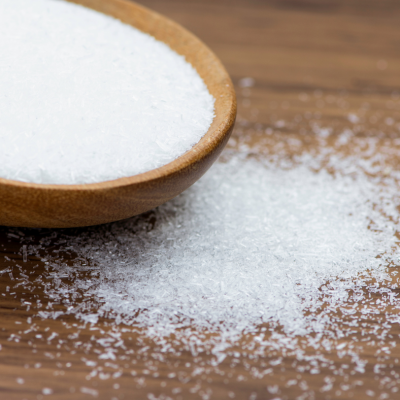
What is Glutamate?
Discovering Glutamate and Differentiating it from MSG
Have you ever heard of glutamate? Here is some information about this amino acid found in various foods.
Glutamate, a non-essential amino acid.
Glutamate is a non-essential amino acid that acts as an excitatory neurotransmitter in the central nervous system.
It is widely present in protein-rich foods such as meat, dairy products, and many vegetables. Some foods like tomatoes, dried mushrooms, and parmesan cheese also have high levels of natural glutamate.
Glutamate plays an important role in synaptic transmission modulation, memory formation, and synaptic plasticity. However, excessive excitation of glutamate receptors can lead to cell damage and contribute to neurodegenerative diseases.
What is the difference between glutamate and MSG?
In 1908, Professor Kikunae Ikeda (1864-1936), a famous Japanese chemist, isolated glutamate, a natural flavor enhancer found in foods like tomatoes, mushrooms, and kombu seaweed (used to make dashi broth). He identified its role in creating a delicious and distinct taste.
Ikeda named this taste "umami," which means "savory" or "delicious" in Japanese. He then created MSG by adding a sodium ion to glutamate to form monosodium salt. This form of glutamate turned out to be more soluble and easier to handle than glutamate alone, making it a convenient ingredient for the food industry.
Since then, MSG has become a commonly used flavor enhancer to improve the taste of food worldwide. It is labeled as "E621" on food packaging.
In the large family of glutamates, other examples include:
- Potassium glutamate or monopotassium glutamate (E622)
- Calcium glutamate, also known as calcium diglutamate or monocalcium diglutamate (E623)
- Ammonium glutamate (E624)
- Magnesium glutamate (E625)
Should MSG be avoided?
Glutamate stimulates neurons, and when consumed excessively or chronically, it is suspected of causing excitotoxicity.
Excitotoxicity is a process that occurs in the central nervous system when there is an excessive accumulation of glutamate that overactivates NMDA and AMPA receptors, leading to overstimulation of nerve cells and damage to brain tissues.
Excitotoxicity is believed to be associated with various symptoms such as headaches, mood disorders, sleep disturbances, memory problems, and neurological diseases like Alzheimer's, epilepsy, and ADHD (attention deficit hyperactivity disorder).
Note: Some individuals, such as children and the elderly, may be more sensitive to this phenomenon.
Another good reason to be cautious about MSG is that due to its stronger and more savory taste, foods containing MSG can lead to food preference. As a result, there may be a desire to consume them more frequently, which can create a certain addiction.
It is also worth noting that foods rich in MSG are often processed foods, which can be high in fat, sugar, salt, and empty calories. Excessive consumption of these foods can lead to overconsumption of calories and eventually weight gain.
What are the different names for MSG?
When we hear the word "glutamate," we often think of MSG (monosodium glutamate). However, we may not always realize that a food can contain MSG, especially if it is not specifically mentioned on the ingredient list.
Here are some common names found on labels that can indicate the presence of MSG (non-exhaustive list):
- "Textured" proteins
- "Hydrolyzed" vegetable proteins
- Protein isolate
- Flavors, including so-called "natural" flavors*
- Yeast extract
- Sodium caseinate
- Carrageenan (E407)
- Maltodextrin
- Citric acid or citrate (E330)
- Malt extract
- Barley malt
- Maltodextrin
- …
To put it simply, it is advisable to avoid ultra-processed foods as much as possible and opt for whole foods (which are more nutritious) and ideally certified organic.
To naturally enhance the flavour of your dishes, feel free to use homemade broth (refer to my article on chicken broth), high-quality spices, anchovies, and natural condiments such as garlic, onion, or shallots, which also offer numerous health benefits.
*It is important to note that the term "natural flavor" does not only refer to aromatic substances extracted from natural sources such as plants, vegetables, fruits, spices, and others. It can also include non-natural ingredients, such as solvents and flavoring agents, used to enhance the flavor and aroma of foods. Manufacturers are not required to disclose the specific ingredients used in the formulation of natural flavors, making it difficult for consumers to know the exact origin and composition of the flavors.
If you need help decoding food labels or have questions about glutamate and other food additives, please don't hesitate to contact me!
